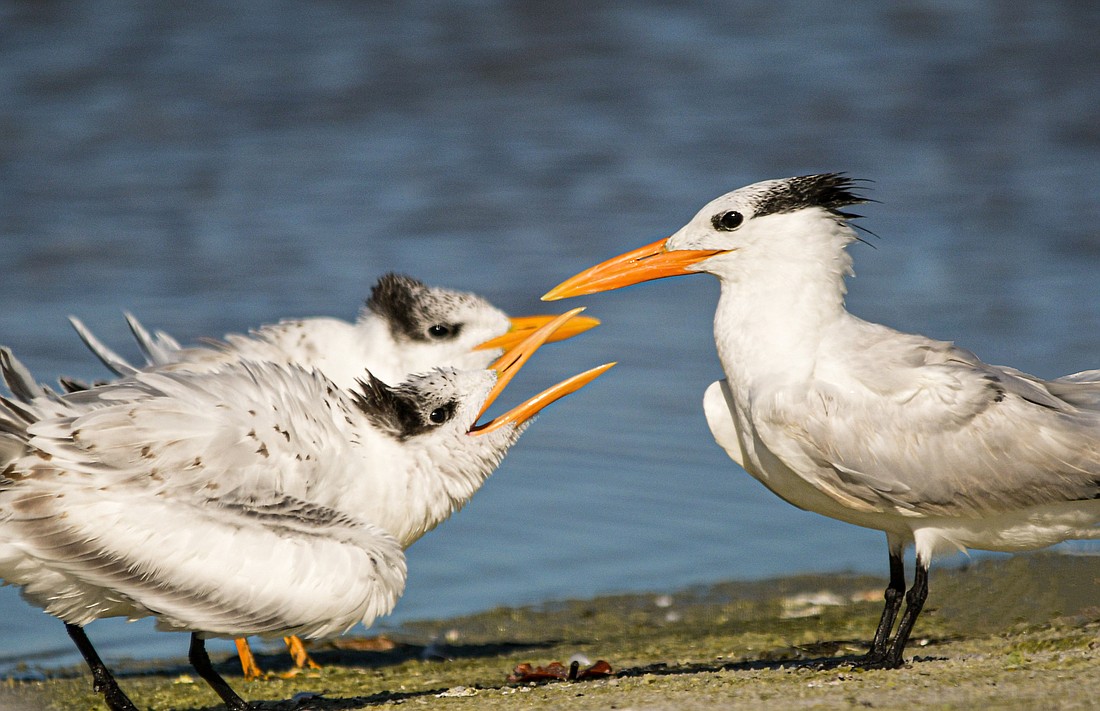- December 23, 2024
-
-
Loading

Loading

With distinctive shaggy black crests, which makes them easy to spot in a crowd, royal terns are found only in coastal areas. They feed by flying above the sea, then diving to catch fish or shrimp.
Highly social, royal terns breed in large colonies which include hundreds, even thousands of pairs. Like many shore birds, they are ground nesters. Once a couple builds a nest (a simple scrape in the sand), they ceremoniously defecate on the nest rim, which hardens it. As their eggs are vulnerable to being swept out to sea, this might be done to cleverly reinforce the nest against flooding.
Royal tern chicks leave the nest within one day after hatching and congregate in a group known as a crèche. This nursery can contain thousands of chicks, ranging in age from 2–35 days old. Royal tern parents only feed their own chicks, amazingly finding them in massive crowds by recognizing their call.
Young royal terns remain with their parents for eight months or longer and continue to beg for food long after they can fly.
Royal terns only nest on isolated offshore islands, but you will frequently spot large flocks on our beaches, resting with other migrating shore birds. And when you do, please avoid disturbing them.
Causing a shorebird to take flight, intentionally or unintentionally, makes them waste vital energy that is critical for their health and the health of their offspring. And, teaching our own offspring about the need to give birds space and not intentionally causing them to fly, will help protect our shore birds for generations to come.
Save our Seabirds is a non-profit organization whose mission is to rescue and rehabilitate sick and injured birds, releasing as many as they can, while educating our community about avoiding injuries and preserving habitats.